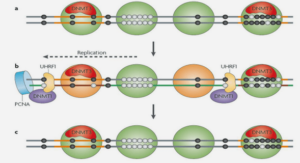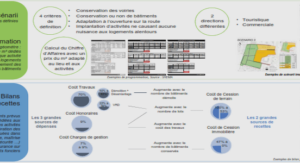Multifunctional materials for EMI shielding
Polymer composites and blends
An extensive class of materials is used for EMI shielding purposes. Metals are by far the most used materials, however, with the development of more sophisticated electronic technology, metals are being replaced by multifunctional materials for higher performances.
Shielding materials based on polymers may present a range of advantages compared to metals, such as lower density and cost, and easier processing (Anupama et al., 2013; Z. Liu et al., 2007; Thomassin et al., 2013). However, most polymers are electrical insulators, a property that makes them almost transparent to electromagnetic waves. Thus, an alternative to overcome this limitation is the development of electrically conductive polymer composites and blends prepared by dispersing properly concentrations of conductive fillers in polymeric matrices.
Polymer composites for EMI shielding can be divided into three main groups, depending on the conductive filler used, metals, intrinsically conducting polymers (ICP), or carbon fillers, and present different aspects concerning to shielding effectiveness, mechanical properties, and processability. In order to choose the most suitable material for a specific EMI shielding application, it is extremely important to do a thorough balance between all those aspects. The three types of polymer composites for EMI shielding are presented below.
Metal-based polymer composites
Metal/polymer composites generally present high EMI shielding effectiveness compared to the other groups. One example is presented by Al-Saleh, Gelves, and Sundararaj (2011) who prepared composites of copper nanowire (CuNW) and Polystyrene (PS). According to the authors, these composites exhibited higher EMI SE than all known conductive polymer composites (at the time of publication). With 1.3 vol.% of CuNW in samples of 210 μm of thickness, the EMI-SE in the X-band frequency range was 27 dB, corresponding to 99.8% of electromagnetic attenuation. Whereas the same level of shielding for multi-walled carbon nanotubes (MWCNT)/PS composites of 1 mm of thickness (five times thicker than the CuNW/PS films) was just achieved from concentrations over 4.3 vol.% of MWCNT (3.3 times more concentrated than the CuNW/PS composites) (Al-Saleh, Gelves, & Sundararaj, 2011). However, metal/polymer composites commonly exhibit some significant drawbacks, for example the decrease of electrical properties due the presence of metal oxides and poor electrical contact between fillers (Gelves, Al-Saleh, & Sundararaj, 2011), and substantial losses of mechanical properties and processability, as high rigidity, high density, and delamination problems. Other metals, e.g. iron, nickel, silver, aluminum, are also used as conductive fillers in ECPCs, and some reports about metal-based polymer composites for EMI shielding can be found elsewhere (Gargama, Thakur, & Chaturvedi, 2016; Jalali, Dauterstedt, Michaud, & Wuthrich, 2011; Jalali, Molière, Michaud, & Wuthrich, 2013; Joseph & Thomas Sebastian, 2013; E. Kim, Lim, Kang, & Yoo, 2016; Madhu et al., 2014; Tanrattanakul & Bunchuay, 2007).
Electrically conductive polymer blends
Blends of intrinsically conducting polymers (ICPs) and insulating polymers are another class of materials largely used for EMI shielding. Magioli et al., (2012) studied blends of conductive polyaniline doped with dodecylbenzene sulfonic acid (PAni.DBSA) and styrene–butadiene– styrene (SBS) triblock copolymer in the X band frequency range. In that research, blends were prepared by melt compounding and in situ polymerization of aniline in the presence of SBS. The maximum EMI-SE was obtained for the blends containing 30 wt.% of PAni.DBSA prepared by in situ polymerization and was between 35 to 40 dB for all the frequency range studied (Magioli, Soares, Sirqueira, Rahaman, & Khastgir, 2012). Despite the fact that good levels of EMI-SE can be achieved by blends of ICPs and conventional polymers, the high quantity of conductive filler necessary is a considerable disadvantage, other drawbacks are the poor processability (Thomassin et al., 2013) and the use of organic solvent for the synthesis of ICPs. Others reports about ICPs, mainly based on PAni and polypyrrole (PPy), used in electrically conductive polymer blends for EMI shielding can be found in (Bhadra, Singha, & Khastgir, 2009; Saini & Arora, 2012; Schettini, Khastgir, & Soares, 2012; Schettini & Soares, 2011).
Carbon-based polymer composites: effect of particles size, shape, dispersion, and orientation
ECPC based on carbon particles are the most widely developed class of composites for EMI shielding at the present time (Thomassin et al., 2013). Among the advantages of using carbon particles as conducting additives, it is possible to highlight the low cost of some particles as carbon black and graphite, and the high aspect ratio of carbon fibers, carbon nanotubes and graphene, which contribute to the formation of an electrical conducting systems with lower amount of additive and may contribute to the improvement of the mechanical properties (Bokobza, 2007; Choudhary & Gupta, 2011). Besides, these composites can be prepared by the conventional processing methods suitable for industry and do not necessarily need the use of organic solvents. However, some disadvantages are the difficulty of dispersing the particles due to their high surface energy, and also the high cost of carbon nanoparticles of high quality (H. Kim et al., 2010; Kuilla et al., 2010; Singh et al., 2012; Spitalsky et al., 2010).
Concerning shielding applications, it is difficult to make a direct comparison of different carbon additives, since the results reported in the n literature are based on composites of different thickness and performed at different frequency ranges (Thomassin et al., 2013). However, Thomassin et al. (2013) presented the general behaviour established by plotting the SE of composites with different kinds of carbon fillers reported on the literature as a function of their loading amounts (Thomassin et al., 2013) .
Processing methods and parameters
For the preparation of carbon/polymer nanocomposites, three main methods are used such as in-situ polymerization of monomer in the presence of nanoadditives, solution casting followed by evaporation of solvent, and melt compounding. Reports show that, in general, in situ polymerization and solution casting as very effective methods to properly disperse nanoadditives in polymeric matrices (Choudhary & Gupta, 2011; Coleman et al., 2006; Maiti et al., 2013; Thomassin et al., 2013). However, these techniques involve the use of organic solvents and consequently present some drawbacks in terms of industrial applications and environmental concerns. Consequently, melt compounding is by far the most commonly used method by the industry (Choudhary & Gupta, 2011; Thomassin et al., 2013) and lots of researches in the literature report studies about the melt dispersion process of carbon particles in polymeric matrices and the influence of mixing parameters of different techniques.
Aiming to understand the melt compounding behaviour and improve the dispersion and distribution of the particles some considerations and parameters must be taken into account, such as wetting of initial agglomerates, that depend on the interfacial energy between additive and matrix; polymer infiltrations; viscosity of the matrix; mixing temperature, time, and speed; and amount of carbon additive (Alig et al., 2012).
INTRODUCTION |






